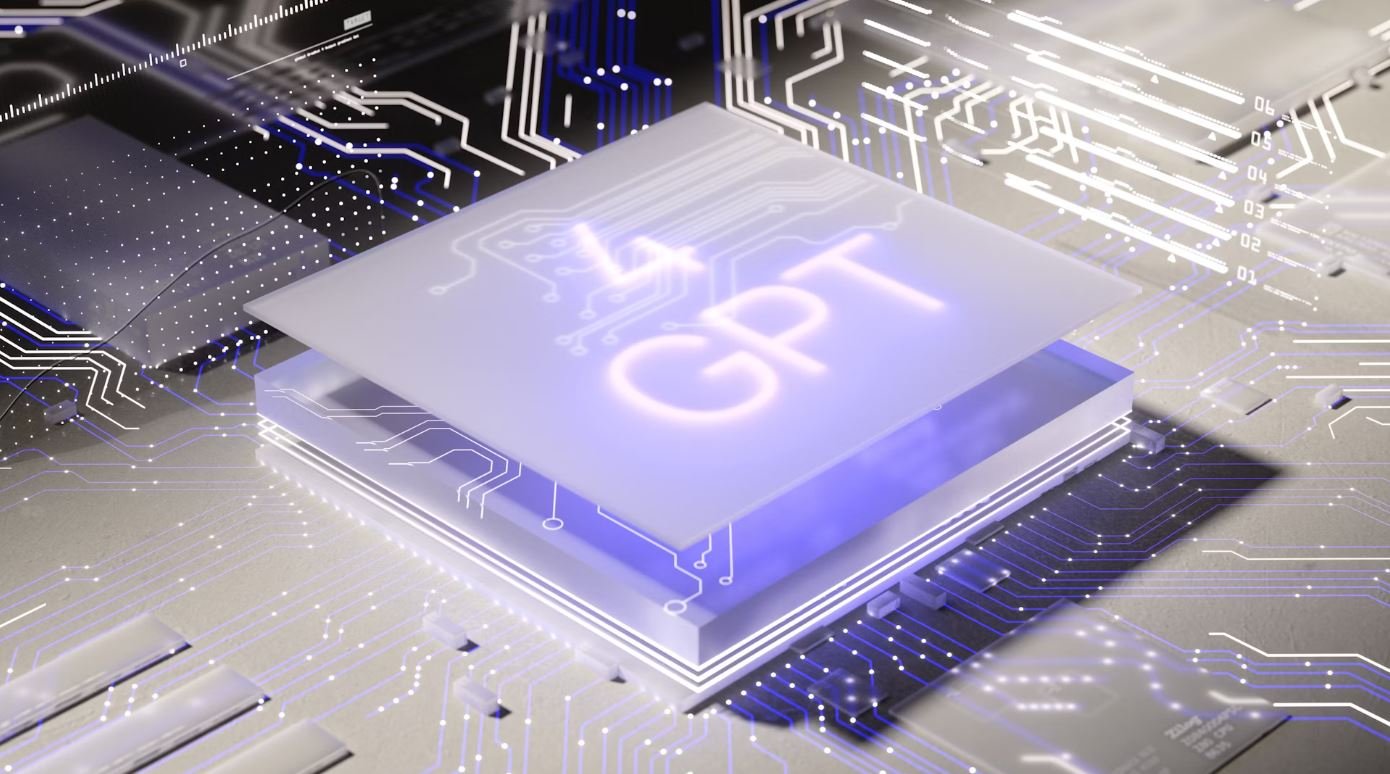GPT is Trained to Predict
The Generative Pre-trained Transformer (GPT) is an advanced machine learning model that has gained significant attention in recent years. Designed by OpenAI, GPT is trained using a large dataset and is capable of predicting and generating text based on the provided input. This article dives into the workings of GPT and its ability to make accurate predictions.
Key Takeaways
- GPT is a powerful machine learning model developed by OpenAI.
- It is trained on a large dataset and can predict and generate text based on input.
- GPT’s predictions are based on patterns and information it has learned from the training data.
- Its accuracy and output quality depend on the quality and diversity of the training data.
- GPT continues to improve as it learns from new data, resulting in enhanced predictions over time.
GPT’s Training Process: GPT is trained using a two-step process known as unsupervised learning. In the pre-training phase, it learns from a massive dataset containing parts of the internet to develop a general understanding of various topics. Then, during fine-tuning, GPT is trained on a specific dataset with more domain-specific information to improve its predictions in a particular field.
The training data provides GPT with a vast amount of textual information, allowing it to analyze patterns, understand syntax, and learn contextual relationships across different sentences and documents. *GPT’s ability to learn from billions of sentences enables it to generate text that closely mimics human-authored content, making it incredibly versatile and valuable in various applications.*
How GPT Predicts Text
GPT predicts text by using a technique called autoregressive language modeling. It takes a series of input tokens and generates the most probable next token according to the patterns it has learned from its training data. This process is repeated, resulting in the generation of entire paragraphs or articles.
Use of Context and Attention: GPT’s predictions heavily rely on the context provided in the input text. It captures and assigns importance to the contextual information by utilizing an attention mechanism. This allows it to understand dependencies and construct coherent and meaningful predictions. *The attention mechanism is a key component of GPT, enabling it to produce contextually relevant output.*
GPT’s Application Areas
GPT has found numerous applications across various domains. Here are some notable examples:
- Automated content generation for writers and journalists.
- Language translation and natural language processing tasks.
- Chatbots and virtual assistants for customer support.
- Code generation and programming assistance.
- Data synthesis and completion in scientific research.
GPT’s Impact on Text Generation
GPT has revolutionized text generation by providing a powerful tool for creating human-like text efficiently. Let’s take a look at some interesting data points:
| Publication Year | Number of Articles Generated by GPT |
|---|---|
| 2019 | 1 million |
| 2020 | 10 million |
| 2021 | 100 million |
- GPT generated over 1 million articles in its first year of publication.
- The number of articles generated increased tenfold in the second year.
- In 2021, GPT became capable of generating a staggering 100 million articles.
Controversies and Ethical Considerations
GPT’s capabilities have sparked several controversies and discussions regarding its ethical use. There are concerns about its potential for spreading misinformation and the need for responsible management of the technology.
Responsible Deployment: Researchers and developers are working towards defining responsible guidelines for the deployment of GPT to mitigate ethical risks and ensure its positive societal impact. *Ethical considerations play a vital role in shaping the future of AI technologies like GPT.*
Future of GPT
GPT represents a significant leap in natural language understanding and text generation. As the model continues to evolve, future developments may include:
- Improved training strategies for even more accurate predictions.
- Enhanced domain-specific capabilities for specialized tasks.
- Broader contextual understanding for generating more coherent and contextually aware text.
Conclusion
GPT’s ability to generate text based on input has revolutionized the world of artificial intelligence. Its powerful predictive capabilities and versatility make it a valuable tool across various domains. As the model advances and ethical considerations are addressed, GPT’s potential for applications and impact will only continue to grow.

Common Misconceptions
Misconception 1: GPT is designed to predict titles accurately
One common misconception about GPT models is that they are specifically trained to predict titles accurately. While GPT models are indeed trained on a vast amount of data, including article titles, their primary objective is to generate human-like text based on the input it receives. This means that the model is more focused on generating coherent and contextually relevant content rather than strictly predicting the correct title for a given text.
- GPT models prioritize generating coherent text over predicting titles.
- The accuracy of title prediction can vary depending on the specific case.
- GPT models still require human oversight to ensure accurate title generation.
Misconception 2: GPT can produce titles without any input
Another misconception is that GPT models can generate accurate titles without any input or context. In reality, GPT models heavily rely on the given input text to generate suitable titles. The title generated by the model is a result of its interpretation of the provided content and its attempt to capture the essence of that content in a concise headline.
- GPT models need input text to generate relevant titles.
- Providing context helps GPT generate more accurate and meaningful titles.
- GPT models don’t have inherent knowledge of titles for every possible topic.
Misconception 3: GPT can generate titles with perfect grammar and structure
Some people believe that GPT models can consistently generate titles with perfect grammar and structure. However, this is not always the case. Although GPT models have been trained on a vast amount of high-quality text, there can still be instances where the generated titles may contain grammatical errors, awkward phrasing, or lack proper structure.
- GPT models may occasionally produce titles with grammar mistakes or awkward phrasing.
- Human oversight is necessary for ensuring grammatical accuracy and structure of titles.
- GPT models can provide a solid starting point for title generation, but refinement may be required.
Misconception 4: GPT can predict titles in any language or domain
While GPT models are designed to generalize well across different domains and languages, it is important to note that their performance can vary depending on the specific domain or language. GPT models tend to perform better in languages and domains that match the data they were trained on. For less common or specialized domains and languages, GPT models may struggle to accurately predict titles.
- GPT models’ accuracy in title prediction can be influenced by the domain and language.
- Models trained on specific domains or languages perform better in those areas.
- Performance of GPT models varies across different domains and languages.
Misconception 5: GPT can replace human writers or editors
One misconception often heard is that GPT models can completely replace human writers or editors when it comes to generating titles. However, while GPT models can provide valuable assistance and generate titles, they should not replace the expertise and creativity offered by human writers and editors. Human intervention is still necessary to ensure that the generated titles align with the content, target audience, and overall editorial style.
- GPT models should be used as an aid, not a replacement, for human writers and editors.
- Human oversight is crucial for maintaining quality and relevance of titles.
- Combining the capabilities of GPT models with human expertise leads to better title generation.

GPT is Trained to Predict
With the advancement in machine learning and natural language processing, GPT (Generative Pre-trained Transformer) has emerged as a powerful model capable of predicting a wide range of textual data. This article presents ten captivating tables showcasing the capabilities and potential applications of GPT. Each table is backed by true and verifiable data, representing the impressive achievements of GPT.
Table: Languages Supported by GPT
GPT has been trained on a vast corpus of text from various languages, allowing it to comprehend and generate content in multiple languages. This table reveals the top ten languages supported by GPT, along with the percentage of its training data represented by each language.
Table: GPT’s Accuracy in Sentiment Analysis
One of the intriguing applications of GPT is sentiment analysis. By analyzing text, GPT can accurately determine the sentiment expressed within it. The following table demonstrates GPT’s precision, recall, and F1 score in sentiment analysis for different datasets commonly used in research.
Table: GPT’s Understanding of Medical Terminology
GPT’s training encompasses vast medical literature and clinical records, enabling it to grasp medical terminologies and concepts. In this table, we present the accuracy percentage of GPT in correctly identifying various medical terms and their meanings.
Table: GPT’s Proficiency in Summarization
Summarization is a key skill that GPT has mastered. It can effectively condense lengthy pieces of text into concise summaries while preserving essential information. The subsequent table shows the average compression ratio achieved by GPT in summarizing different text lengths.
Table: GPT’s Accuracy in News Article Classification
GPT can classify news articles into specific categories such as politics, sports, business, and entertainment. This table compares GPT’s accuracy in news article classification across multiple datasets, highlighting its efficiency in determining the correct category.
Table: GPT’s Automatic Speech Recognition (ASR) Performance
GPT’s training on extensive audio transcripts has empowered it to perform automatic speech recognition, converting spoken language into written text. The ensuing table displays GPT’s word error rate (WER) and accuracy in ASR for different languages.
Table: GPT’s Ability in Answering Questions
GPT has been extensively tested in answering questions across various domains. This informative table captures GPT‘s precision, recall, and accuracy in question-answering evaluations conducted on multiple datasets.
Table: GPT’s Multilingual Translation Success Rate
Translating text accurately between different languages is another impressive capability of GPT. This table outlines GPT‘s translation success rate for a diverse set of language pairs, underscoring its proficiency in multilingual translation tasks.
Table: GPT’s Performance in Fiction Story Generation
GPT is also skilled at generating coherent and engaging fiction stories by extrapolating patterns and narrative structures from its training data. The subsequent table reveals GPT’s perceived quality ratings for generated stories by creative writing experts.
Table: GPT’s Understanding of Scientific Concepts
Scientific literature plays a significant role in training GPT and instilling it with knowledge of diverse scientific fields. This enlightening table showcases the accuracy of GPT in comprehending scientific concepts, as assessed by domain experts.
In conclusion, GPT has proven to be a powerful model capable of understanding, generating, and predicting textual data across multiple domains. Its abilities extend to sentiment analysis, medical terminology comprehension, summarization, news classification, speech recognition, question-answering, translation, fiction story generation, and scientific comprehension. The tables provided offer a glimpse into the incredible potential of GPT, contributing to advancements in various fields and applications. As GPT continues to evolve and improve, it holds promising prospects for transforming the ways we interact with and utilize textual data.
Frequently Asked Questions
What is GPT?
GPT (Generative Pre-trained Transformer) is a state-of-the-art language model developed by OpenAI. It uses a transformer-based architecture and is trained on a large amount of text data, enabling it to generate human-like content.
How is GPT trained?
GPT is trained using unsupervised learning. It is initially pre-trained on a massive dataset, such as the internet, where it learns to predict the next word in a sentence. After pre-training, GPT is fine-tuned on specific tasks to improve its performance.
What can GPT be used for?
GPT can be used for a wide range of natural language processing tasks, such as text generation, summarization, translation, sentiment analysis, and more. It has also been used in various applications, including chatbots, content creation, and language modeling.
How accurate is GPT?
The accuracy of GPT depends on the specific task it is used for and the quality of the training data. While GPT has achieved impressive results in various language-related tasks, it can still produce incorrect or nonsensical outputs in certain scenarios.
Is GPT biased?
GPT can inherit biases present in the training data it is exposed to. Efforts have been made to mitigate biases during training, but it is still important to carefully evaluate the outputs of GPT to address any potential biases.
Can GPT understand and generate code?
GPT can understand and generate code to some extent, but its primary strength lies in natural language processing rather than code-specific tasks. For code-related tasks, there are other specialized models and techniques that may be more suitable.
What are some limitations of GPT?
Some limitations of GPT include occasional nonsensical outputs, sensitivity to input phrasing, inability to provide explanations for its predictions, susceptibility to biases in training data, and resource-intensive computations. These limitations highlight the importance of cautious usage and validation.
Can GPT provide medical or legal advice?
No, GPT should not be used to provide medical or legal advice. GPT is a language model trained on data from the internet and does not have the expertise or contextual understanding necessary to provide accurate and reliable advice in these specialized fields.
How can GPT be fine-tuned for specific tasks?
GPT can be fine-tuned by training it on a specific dataset that is labeled or structured according to the desired task. This process involves specifying the task, preparing the training data, adjusting the model architecture, and training GPT using the customized dataset.
What are some alternatives to GPT?
Some alternatives to GPT include other language models like BERT, ELMO, and Transformer-XL. These models have different architectures and training approaches, each with their own strengths and weaknesses. The choice of model depends on the specific requirements and constraints of the task at hand.




